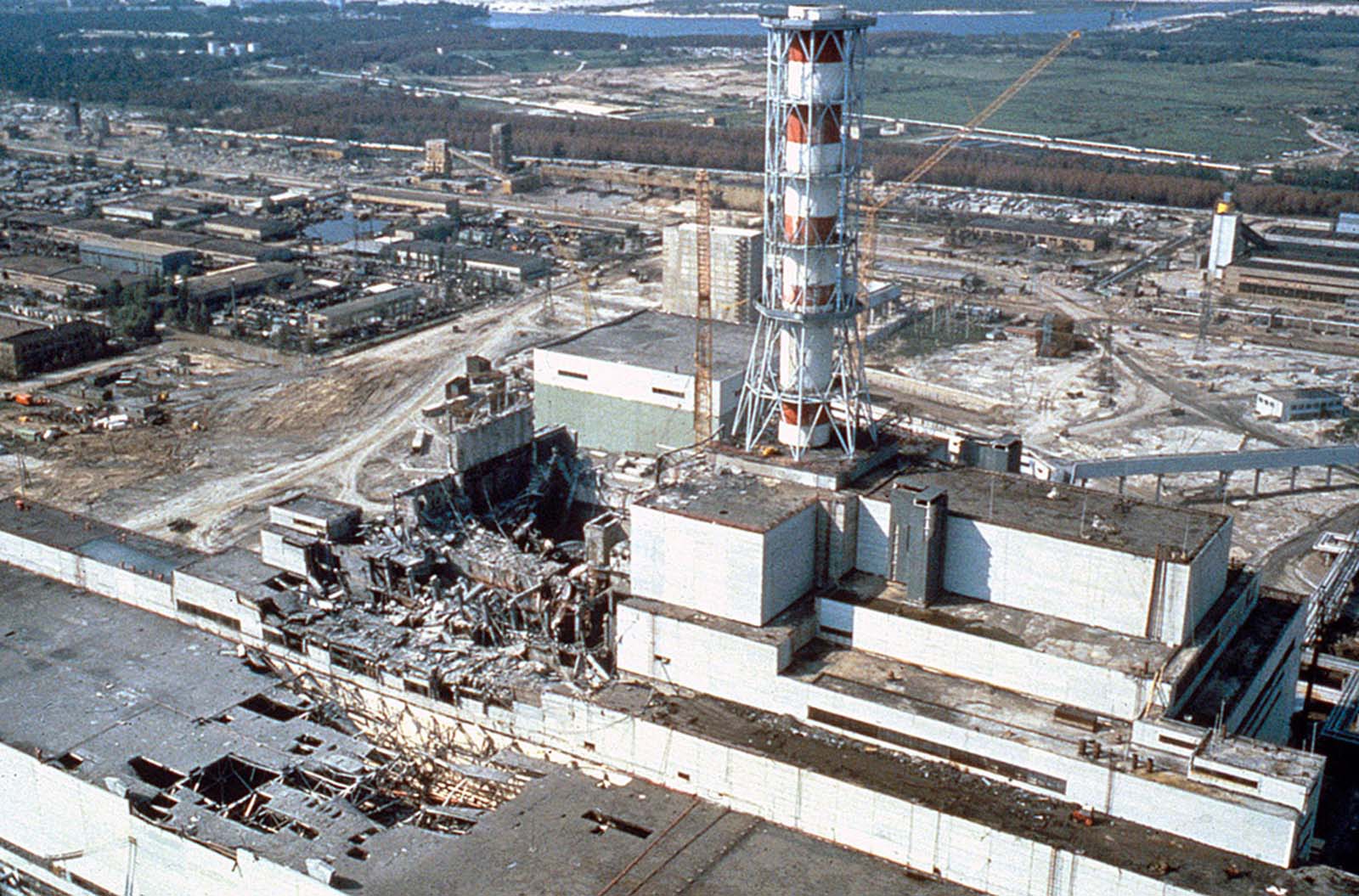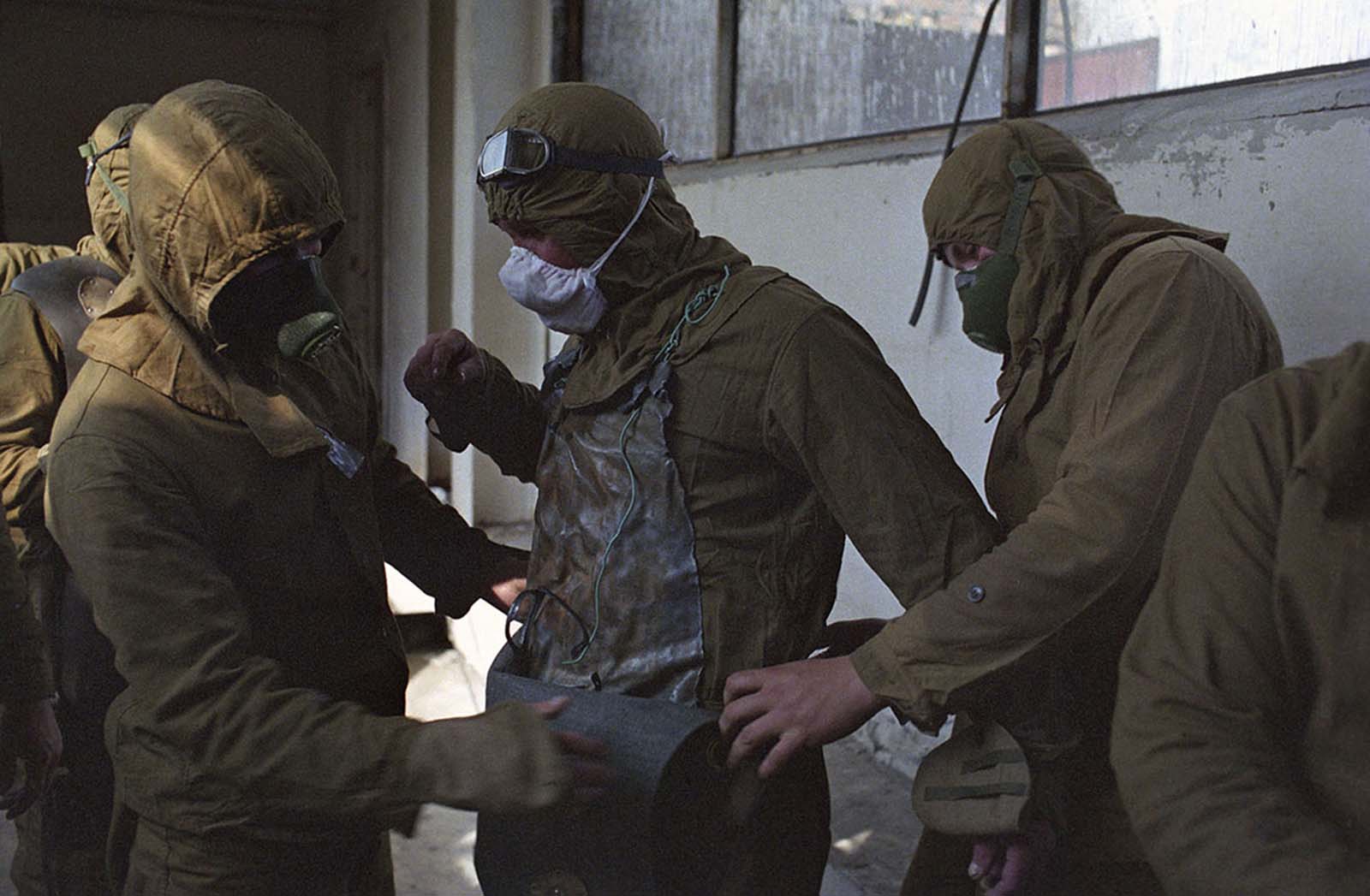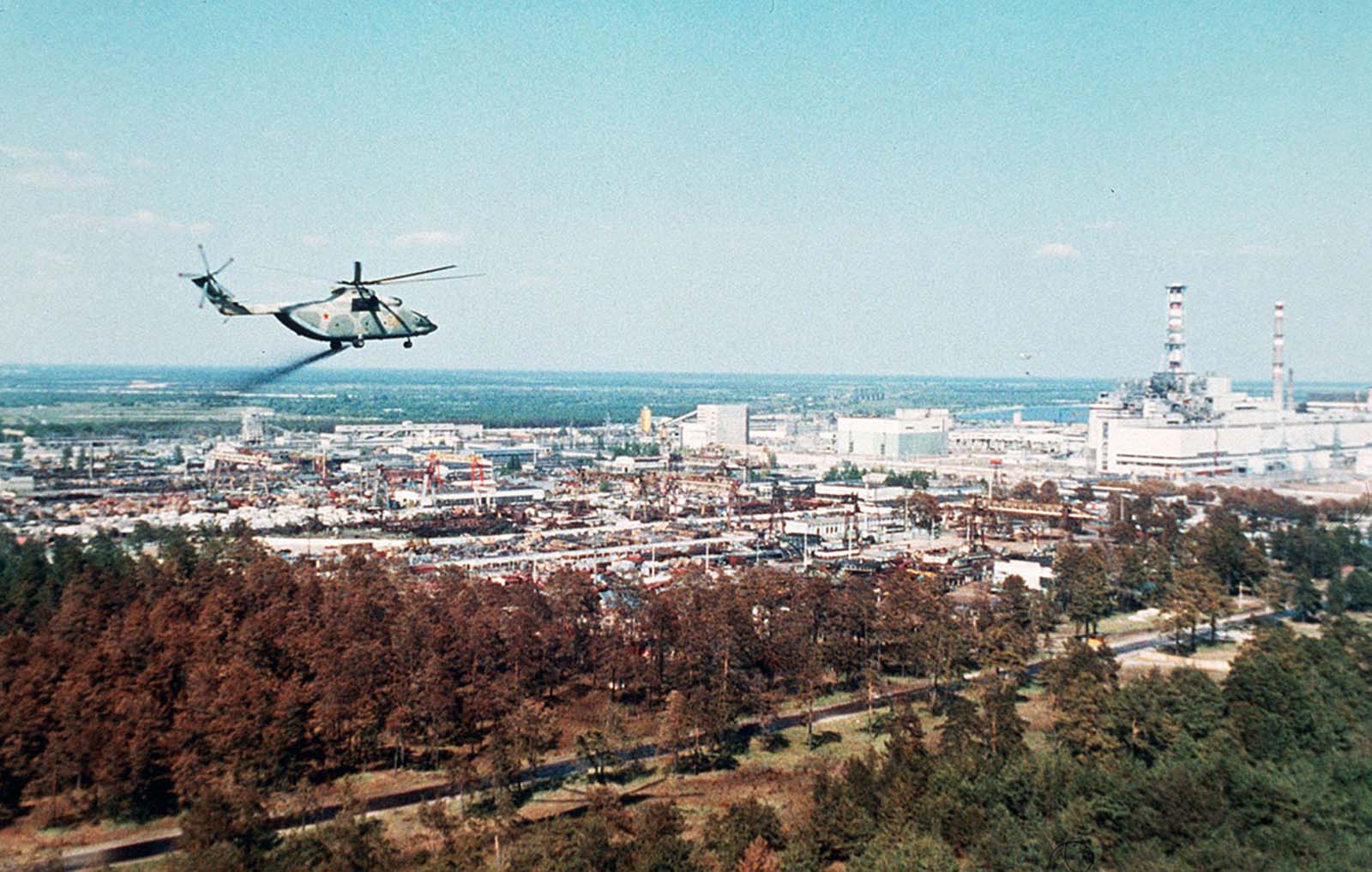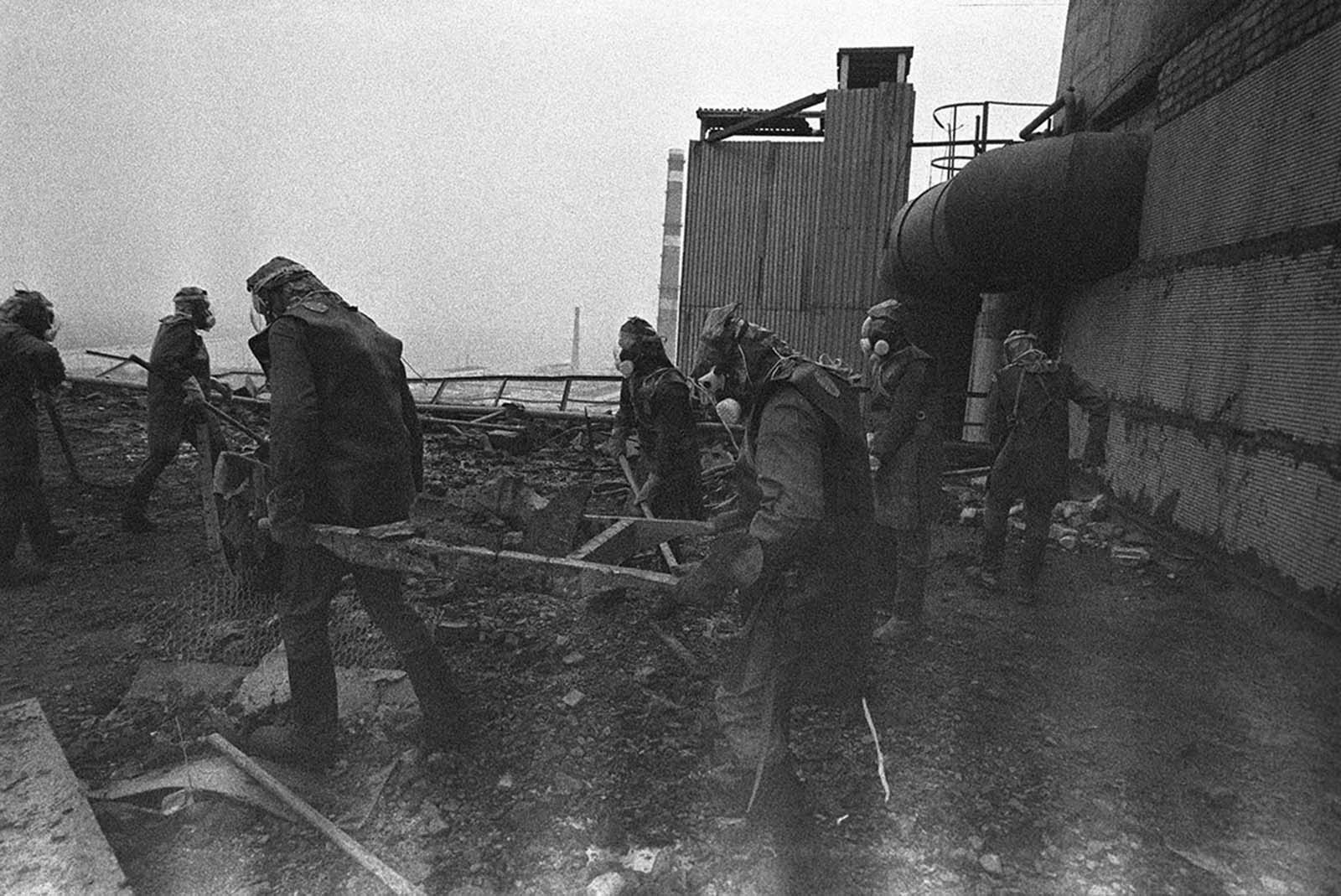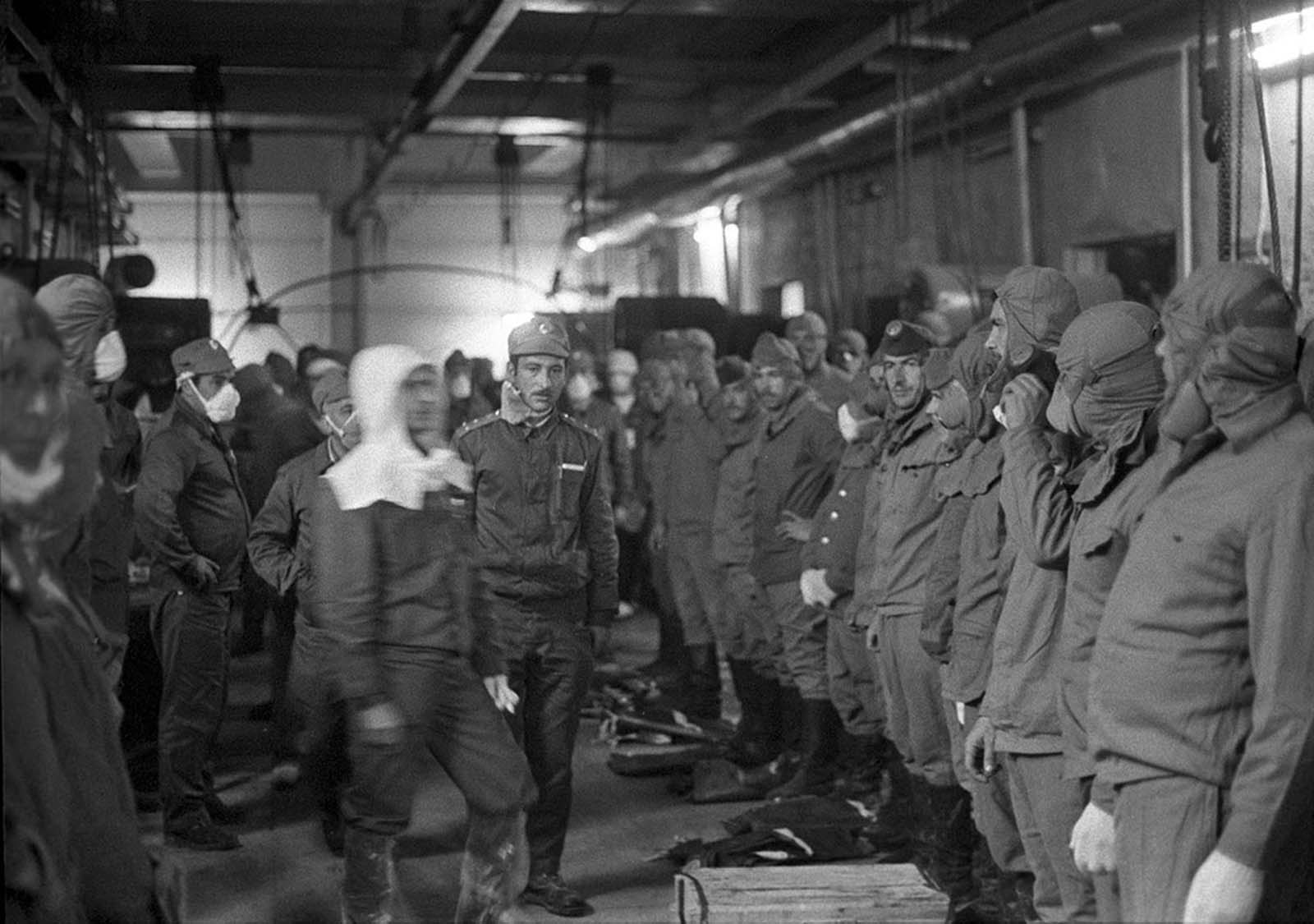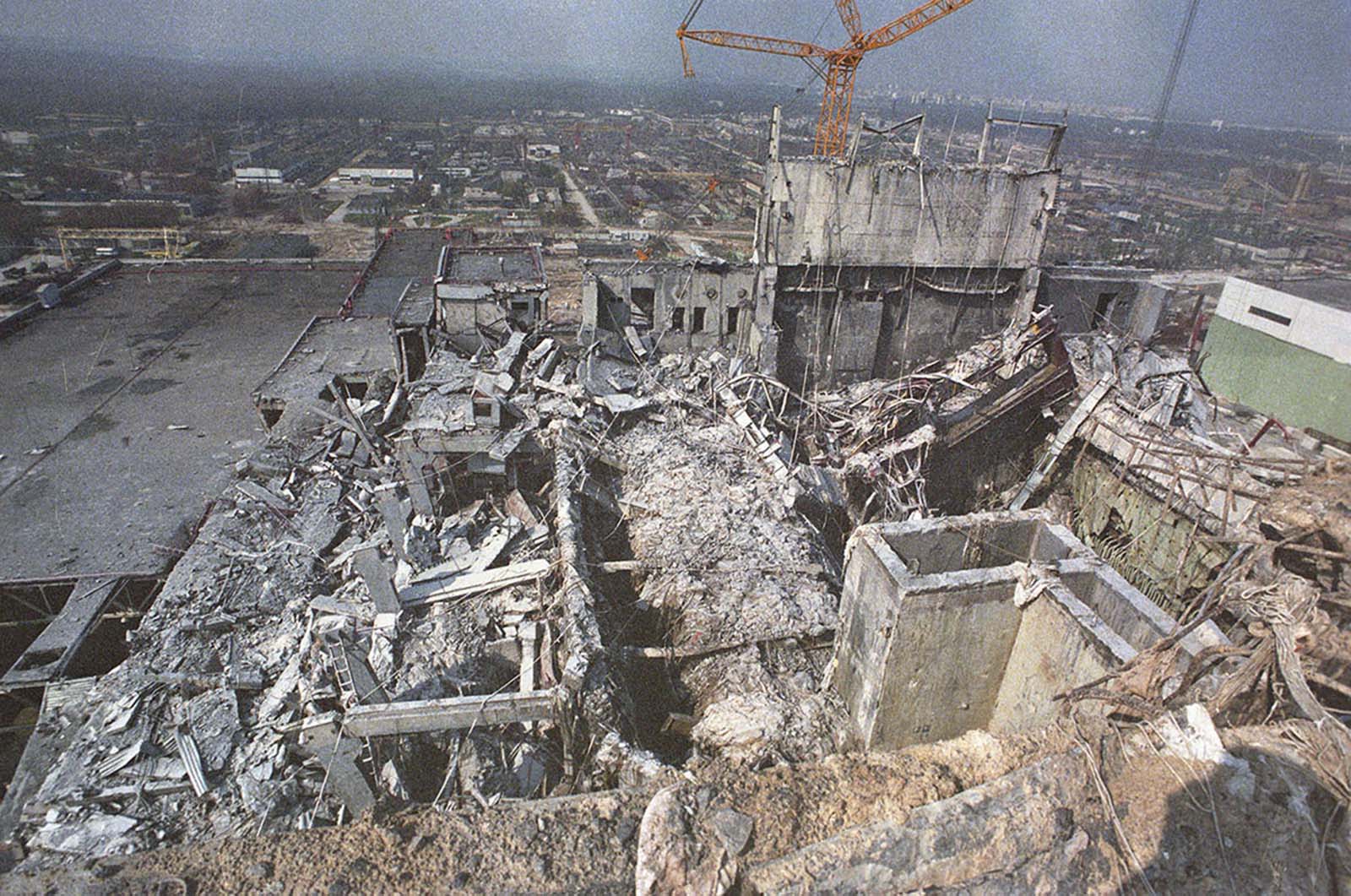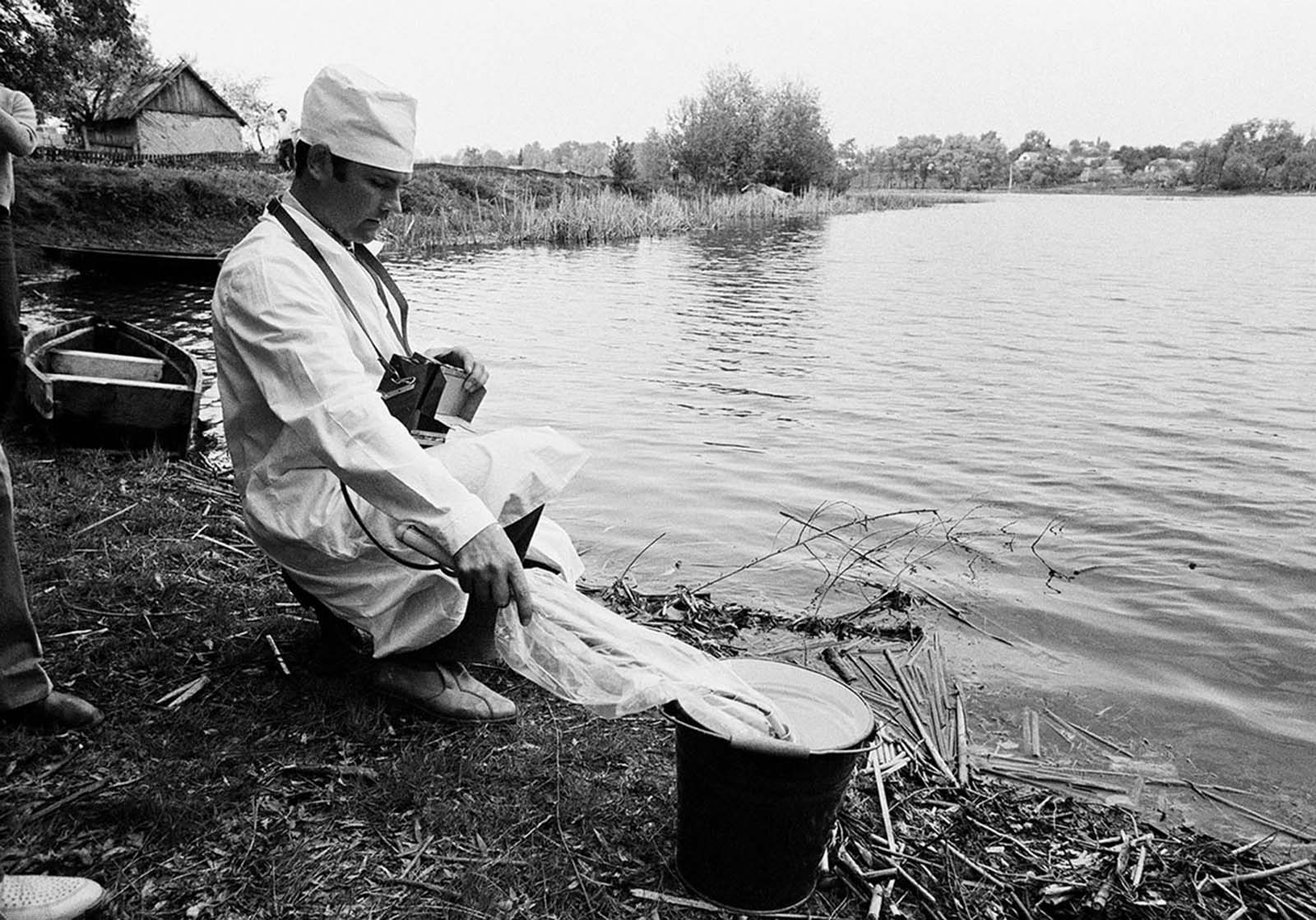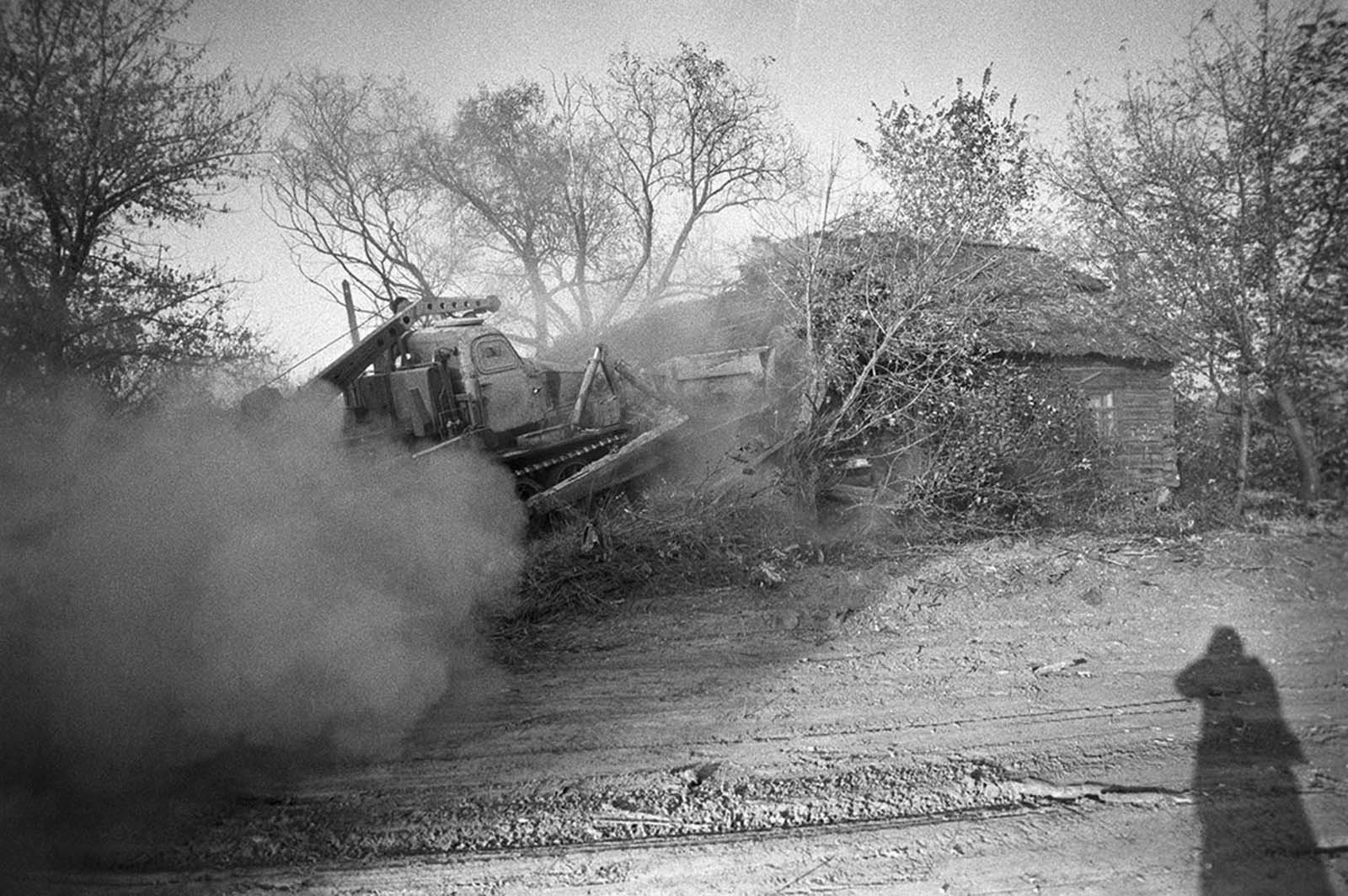The workers and emergency responders were not the only ones to risk their lives—a handful of photographers went to the scene as well, managing to capture images of some of the chaos and acts of heroism that took place in the weeks and months that followed. Emergency crews responding to the accident used helicopters to pour sand and boron on the reactor debris. The sand was to stop the fire and additional releases of radioactive material; the boron was to prevent additional nuclear reactions. A few weeks after the accident, the crews completely covered the damaged unit in a temporary concrete structure, called the “sarcophagus,” to limit the further release of radioactive material. The Soviet government also cut down and buried about a square mile of pine forest near the plant to reduce radioactive contamination at and near the site. The accident occurred during a safety test meant to measure the ability of the steam turbine to power the emergency feedwater pumps of an RBMK-type nuclear reactor in the event of a simultaneous loss of external power and major coolant leak. During a planned decrease of reactor power in preparation for the test, the operators accidentally dropped power output to near-zero, due partially to xenon poisoning. While recovering from the power drop and stabilizing the reactor, the operators removed a number of control rods which exceeded limits set by the operating procedures. Upon test completion, the operators triggered a reactor shutdown. Due to a design flaw, this action resulted in localized increases in reactivity within the reactor (i.e., “positive scram”). This resulted in rupture of fuel channels, leading to a rapid decrease in pressure which caused the coolant to flash to steam. This decreased neutron absorption, leading to an increase in reactor activity, which further increased coolant temperatures (a positive feedback loop). This process resulted in steam explosions and melting of the reactor core. The meltdown and explosions ruptured the reactor core and destroyed the reactor building. This was immediately followed by an open-air reactor core fire which lasted until 4 May 1986, during which airborne radioactive contaminants were released and deposited onto other parts of the USSR and Europe. Approximately 70% landed in Belarus, 16 kilometres (9.9 mi) away. The fire released about the same amount of radioactive material as the initial explosion. In response to the initial accident, a 10-kilometre (6.2 mi) radius exclusion zone was created 36 hours after the accident, from which approximately 49,000 people were evacuated, primarily from Pripyat. Following the reactor explosion, which killed two engineers and severely burned two more, a massive emergency operation to put out the fire, stabilize the reactor, and clean up the ejected radioactive material began. During the immediate emergency response, 237 workers were hospitalized, of which 134 exhibited symptoms of acute radiation syndrome (ARS). Among those hospitalized, 28 died within the following three months, all of whom were hospitalized for ARS. In the following 10 years, 14 more workers (9 who had been hospitalized with ARS) died of various causes mostly unrelated to radiation exposure. Following the disaster, Pripyat was replaced by the new purpose-built city of Slavutych. The USSR built the protective Chernobyl Nuclear Power Plant sarcophagus by December 1986. It reduced the spread of radioactive contamination from the wreckage and protected it from weathering. The confinement shelter also provided radiological protection for the crews of the undamaged reactors at the site, which were restarted in late 1986 and 1987. However, this containment structure was only intended to last for 30 years, and required considerable reinforcement in the early 2000s. The Shelter was supplemented in 2017 by the Chernobyl New Safe Confinement which was constructed around the old structure. This larger enclosure aims to enable the removal of both the sarcophagus and the reactor debris while containing the radioactive materials inside. Clean-up is scheduled for completion by 2065. The Chernobyl accident attracted a great deal of interest. Because of the distrust that many people had in the Soviet authorities, which engaged in a major cover-up of the disaster, a great deal of debate about the situation at the site occurred in the First World during the early days of the event. Because of defective intelligence based on satellite imagery, it was thought that unit number three had also had a dire accident. Journalists mistrusted many professionals, and they in turn encouraged the public to mistrust them. The accident raised already heightened concerns about fission reactors worldwide, and while most concern was focused on those of the same unusual design, hundreds of disparate nuclear reactor proposals, including those under construction at Chernobyl, reactors numbers 5 and 6, were eventually canceled. With ballooning costs as a result of new nuclear reactor safety system standards and the legal and political costs in dealing with the increasingly hostile/anxious public opinion, there was a precipitous drop in the rate of new reactor construction after 1986. The accident also raised concerns about the cavalier safety culture in the Soviet nuclear power industry, slowing industry growth and forcing the Soviet government to become less secretive about its operating procedures. The government coverup of the Chernobyl disaster was a catalyst for glasnost, which “paved the way for reforms leading to the Soviet collapse.” Numerous structural and construction quality issues, as well as deviations from the original plant design, had been known to KGB since at least 1973 and passed on to the Central Committee, which took no action and classified the information. (Photo credit: Igor Kostin / Boris Yurchenko / Laski Diffusion / Volodymyr Repik / Sygma via Getty). Notify me of new posts by email.
Δ Subscribe


